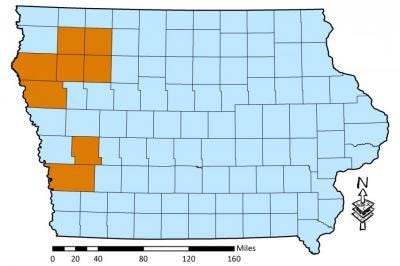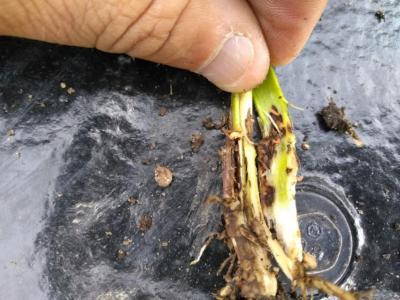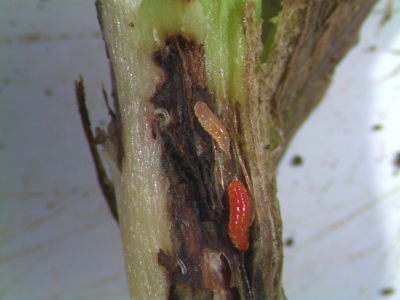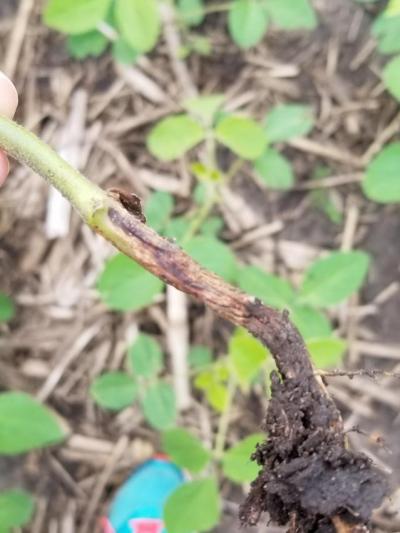August 2, 2018

Source: Iowa State University Extension
In 2016 and 2017, there were isolated reports of soybean injury by soybean gall midge in northwest Iowa. Confirmations were reported in 2011 from Nebraska and in 2015 from South Dakota. In 2018, the distribution in Iowa has spread to eight Iowa counties (Figure 1). This article hopes to raise awareness about a new soybean pest and confirm any additional infested Iowa counties.

Confirmations of soybean gall midge in 2018 indicated by Iowa counties in orange.
Much is unknown about the soybean gall midge. Entomologists cannot even confirm the species at this point (we are working on it!). Here are some details about the biology and plant injury we have observed so far:
Injury is most severe at field edges; this possibly indicates adults fly to new soybean fields the following growing season.
Larval feeding and plant injury is usually restricted to the base of the plant (Photo 1).

Spilling open soybean stems will reveal midge larvae including decaying plant tissue. Photo by Ryan Rusk.
Many midges can infest a single plant (Photo 2).

Many midges can infest a single plant (Photo 2).
Vegetative and reproductive plants can be infested.
Initially, infested stems look swollen (Photo 3), eventually turn brown (Photo 4) and break off resulting in plant death.

Look for discolored, swollen soybean stems near the soil line.

After prolonged midge feeding, the plants break off and die.
In some cases, plants were infected with a fungal disease. But this wasn’t always true as we were able to collect infested plants that did not have any fungal infection present.
Cultural control practices did not seem to make a difference, including variety selection, time of planting, row spacing, tillage or manure application.
Insecticidal seed treatments did not appear to effectively suppress the midges.
We are assuming the soybean gall midge can complete at least two generations in Iowa, but we do not know how long a generation takes to develop. We also assume it can overwinter in Iowa and does so as a pupa in the soil or leaf litter similar to other midges.
Midges are a fly in the Cecidomyiidae family. There are about 6,000 midges worldwide and at least 1,100 species in North America. Midges are small (2-3 mm), have long antennae and unusually hairy wings. Most midges are fragile and weak fliers. Many midges are considered economically important plant pests (e.g., Hessian fly, sunflower midge, wheat blossom midge); however, some are predatory on aphids and mites. The maggots are not mobile and must be located on or near the host plant to survive. Many midges larvae feed within the host plant tissue, creating abnormal growths called galls.
Originally posted by Iowa State University Extension.
You May Also Like




